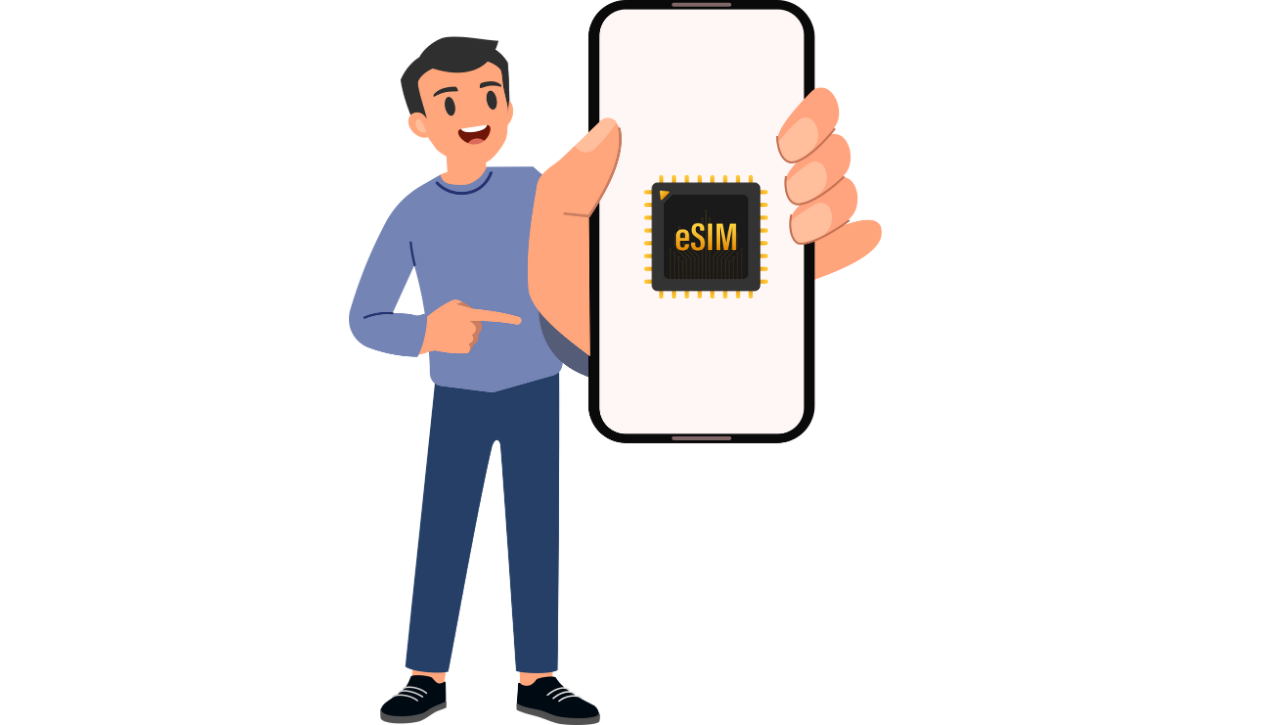
SIM technology has undergone many changes throughout the history of the telecommunications industry. From traditional physical SIMs to microSIM, nanoSIM, and now eSIM. This is not just an improvement in size but also a complete transformation in how users connect to mobile networks. Way2go believed that the future of eSIM promises to usher in a new era for telecommunications, making mobile network management more flexible than ever.

eSIM (Embedded SIM) is a chip embedded directly into a device, replacing the traditional physical SIM. With eSIM, users can switch between mobile carriers quickly without needing to change physical SIM cards. This technology is becoming increasingly popular in mobile devices, smartwatches, tablets, laptops, and even automobiles. Besides, you can easily purchase a travel eSIM at a great price on the Way2go website: https://way2go.vn.

Advantages and disadvantages of eSIM
Below are the details of eSIM pros and cons which you should know more about it: :
eSIM offers numerous benefits compared to traditional SIM cards, including:
Compact design, saving space: eSIM is soldered directly onto the device’s circuit board, saving internal space in smartphones, smartwatches, or laptops. This allows manufacturers to optimize product design, making devices thinner or adding larger batteries.
Easier carrier switching without replacing a SIM card: Users can change mobile networks through software without physically inserting or removing a SIM. This is convenient for switching between different plans or choosing a better network provider.
Supports multiple numbers on one device: Some smartphones can store multiple eSIM profiles simultaneously (depending on the model), enabling users to use multiple phone numbers without carrying multiple physical SIM cards.
Enhanced security, reducing the risk of SIM theft: Since eSIM is integrated into the device, criminals cannot remove it to hijack the phone number. This helps prevent fraud schemes like SIM swapping, where criminals take over a SIM to access banking or social media accounts.
No risk of damage due to frequent SIM removal: Physical SIMs can accumulate dust, get damaged, or be lost when frequently removed. eSIM eliminates this risk entirely, making it especially useful for devices without SIM card slots, such as the Apple Watch and Google Pixel Watch.
Convenient for travelers and frequent movers: Users can purchase eSIM plans from local carriers via an app without needing to find and buy a physical SIM card.
Not all devices support eSIM: Currently, eSIM is mainly available on flagship models such as the iPhone 14/15, Samsung Galaxy S23, Google Pixel, Apple Watch, iPad, etc. Many mid-range or older phones do not support eSIM, limiting its accessibility.
Difficult to switch between devices: A physical SIM can be easily removed and inserted into another phone, whereas eSIM requires scanning a QR code or reconfiguring through the carrier’s app. If a phone is damaged, lost, or if the user wants to switch to a new device, they must contact the carrier to obtain a new eSIM.
Limited activation attempts per device: Some carriers restrict the number of times an eSIM can be downloaded. For example, some providers allow scanning the QR code only three times before requiring a new eSIM. If users frequently switch devices, they may face difficulties reactivating their eSIM.
Not all mobile carriers support eSIM: Although eSIM is becoming more common, not all carriers worldwide offer support.
Troubleshooting eSIM issues can be complex: If an eSIM encounters problems (such as failing to connect to a network), users must contact their carrier or reset the eSIM configuration, which can be time-consuming.

The future of eSIM by 2030
eSIM becoming the standard for mobile devices by 2030: Experts predict that by 2030, eSIM will gradually replace physical SIM cards and become the default standard for smartphones, tablets, and other mobile devices. Next-gen SIM technology will enhance user experience by enabling faster carrier switching, improving security, and simplifying network management.
Integration across more devices: eSIM 2030 will not be limited to smartphones but will be widely adopted in IoT devices, smart cars, and smart home appliances. By 2030, billions of IoT devices are expected to rely on eSIM for stable connectivity and enhanced security.
Cost optimization: As eSIM becomes more widespread, manufacturing and operational costs will decrease significantly since physical SIM cards will no longer be needed. Additionally, telecom providers will reduce operational expenses through remote management systems, allowing for more competitive pricing for consumers.
Enhanced security: One of the key benefits of eSIM is the reduced risk of SIM loss, data theft from physical SIM cards, and fraud. It also helps prevent cybercriminals from hijacking phone numbers to access bank accounts or personal data.
eSIM will evolve alongside 5G, providing ultra-fast and stable connectivity. It will enable seamless automatic switching between 5G networks, minimizing downtime. Users can activate multiple eSIMs simultaneously and choose flexible plans based on their needs. Additionally, AI integration will allow for automatic selection of the strongest available network, optimizing connectivity without manual intervention.
Combatting SIM swap attacks: Cybercriminals are becoming increasingly sophisticated in executing SIM swap attacks, where they hijack phone numbers to steal bank accounts and sensitive data.
Biometric and two-factor authentication: eSIM technology will incorporate biometric authentication or two-factor verification to prevent unauthorized SIM changes.
Blockchain for data protection: Emerging technologies like blockchain could be integrated to encrypt eSIM data, further enhancing personal information security.
eSIM allows users to easily purchase and activate local mobile plans when traveling or working abroad. In the future, eSIM-integrated digital passports could serve as an international identity verification tool, streamlining border control and expediting airport procedures while improving security.

Future applications of eSIM
1. Use of eSIM in smartphones
Major smartphone manufacturers such as Apple, Samsung, and Google have already started integrating eSIM into their products. Between 2027 and 2030, experts predict that physical SIM cards may be completely phased out in high-end devices. Regions with advanced telecom infrastructure, such as the U.S., Europe, Japan, and South Korea,... may stop selling physical SIM cards altogether. However, developing countries may require more time to transition due to inconsistent telecom infrastructure.
eSIM plays a crucial role in connecting IoT devices and smart cars. For example:
Smart Cars: Directly connect to mobile networks to enable GPS services, entertainment features, and advanced safety support.
IoT Devices: Devices such as smartwatches, security cameras, and smart home systems can utilize eSIM to maintain a stable and secure connection.
The future of eSIM presents both opportunities and challenges for the telecommunications industry. With the continuous advancement of next-gen SIM technology, eSIM is set to become a dominant trend. Despite some limitations, its outstanding benefits ensure that eSIM.
📞 Contact and buy Way2go Travel SIM Today!
Website: https://way2go.vn
Hotline: 090.222.7715
Email: [email protected]
Enrich your travel experience while staying connected
